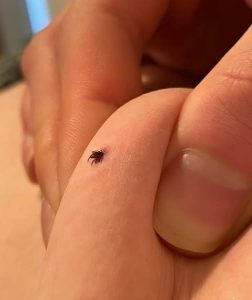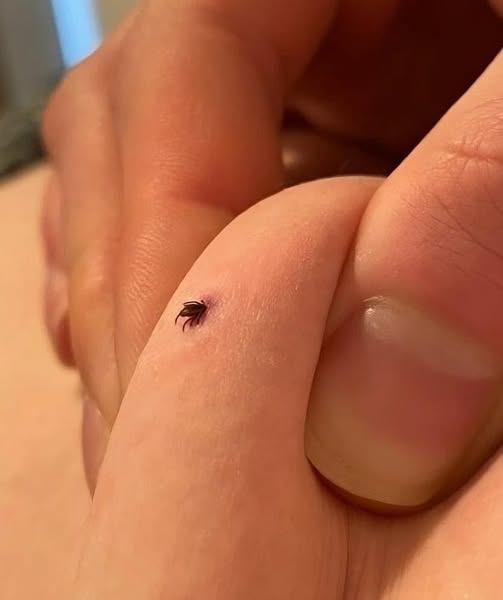Despite their small size, ticks present serious health concerns. These tiny, bloodsucking parasites can be found in tall grasses, woodlands, and even well-kept backyards in the suburbs. Although many people think of ticks as being associated with hiking or camping, the truth is that they can enter your home just as readily and attach themselves to clothing, pets, or even firewood. Although finding a tick indoors might be frightening, understanding what to do next can help protect your home and prevent illness.
Whether a tick is lodged in your flesh, crawling on a wall, or attaching to a pet, identifying the species is the most crucial initial step. Different infections are carried by different tick species. For example, the American dog tick can spread Rocky Mountain spotted fever, and blacklegged ticks, commonly called deer ticks, are notorious for spreading Lyme disease. Others, such as the Lone Star tick, can spread tularemia or trigger allergic reactions to red meat. Take a clear, close-up picture of the tick if you’re unsure of its kind, and get identification assistance from a pest control professional or medical professional. Later onset of symptoms may make this crucial.

It’s critical to remove the tick as soon as possible and with caution if it has attached itself to you, a family member, or your pet. Grab the tick as near the skin’s surface as you can with fine-tipped tweezers or a tick removal instrument. To prevent the tick from breaking and leaving pieces lodged in the skin, pull out slowly and gradually without twisting or jerking. Additionally, do not squeeze the tick’s body as this may cause dangerous diseases to enter your bloodstream.
After removing the tick, wash the bitten site with warm water and soap, then apply rubbing alcohol or iodine to sterilize it. Ticks can be disposed of by flushing them down the toilet, wrapping them tightly in tape, or putting them in a sealed plastic bag. If you need to present the tick to a doctor later, you might wish to put it in a container that is marked with the date.
Over the next few days and weeks, keep an eye out for any indications of infection or sickness around the bite site. Fever, exhaustion, muscular aches, rash, or joint discomfort are some of the early signs of diseases spread by ticks. A bullseye-shaped rash surrounding the bite is a crucial indicator of Lyme disease. Inform your healthcare practitioner about the tick bite as soon as possible if you encounter any of these symptoms.
Finding a tick indoors may indicate that there are additional ticks nearby, even if no one in your house has been bitten. Examine your furniture, clothing hampers, bedding, and pets in detail. Vacuum floors and carpets, check for tick hiding places, and wash clothes and pet bedding in hot water.
Tick-proofing your surroundings is the first step in avoiding tick encounters in the future. Make sure your pets are using the most recent flea and tick repellents advised by their veterinarians. Trim down bushes and long grasses, keep your yard trimmed, and clear away leaf litter outside. Use wood chips or gravel to create a barrier between your grass and wooded areas, and during tick peak seasons, think about applying pet-safe pesticides to your yard.
Even though ticks are tiny, ignoring them can have serious consequences. You can shield your family, your pets, and yourself from the health hazards they provide both indoors and out by paying close attention to them, getting rid of them quickly, and taking preventative measures.
